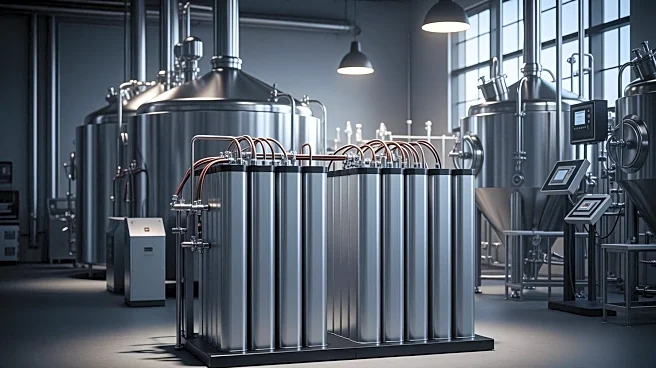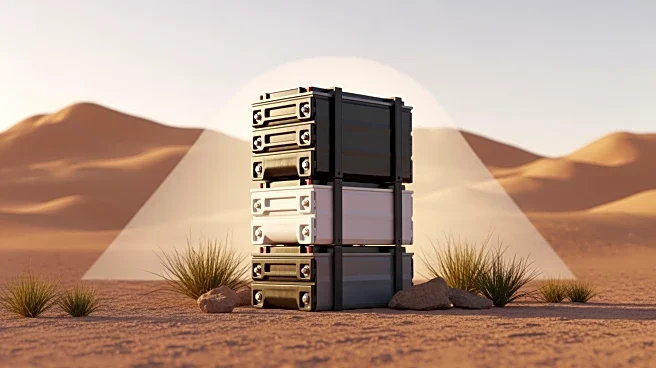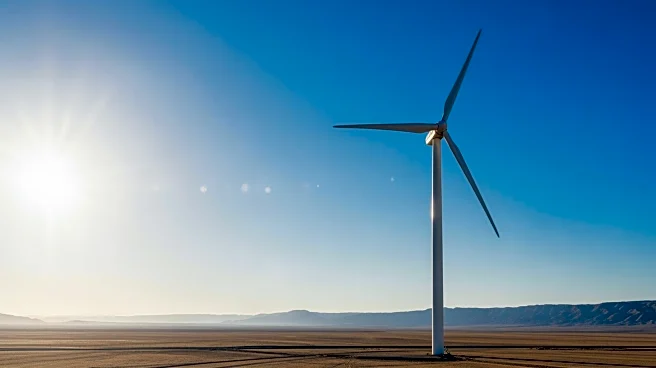What's Happening?
Rondo Energy, a U.S. energy storage startup, is set to implement its innovative 'Heat Battery' system at a Heineken brewery in Portugal. This system, which utilizes firebricks to store and circulate heat, will replace natural gas to provide high-temperature
steam for the brewery. The project is part of a broader initiative supported by the EU-Catalyst funds, aimed at decarbonizing industrial operations. The Heat Battery system is designed to absorb electricity from renewable sources during off-peak periods, converting it into continuous heat and steam. This marks the first large-scale use of such technology in the European beverage industry, with potential for broader application across various sectors.
Why It's Important?
The deployment of Rondo's Heat Battery in Europe signifies a major step towards industrial decarbonization, offering a model for reducing reliance on fossil fuels. By providing a cost-effective and sustainable alternative to conventional energy sources, this technology could significantly impact energy resilience and price stability in volatile markets. The project also highlights the potential for U.S. innovations to influence global energy practices, despite recent shifts in U.S. energy policy. For Heineken, the initiative promises to cap energy costs and enhance sustainability, aligning with broader corporate goals of reducing carbon emissions.
What's Next?
If successful, the Heineken project could pave the way for similar implementations across Europe and beyond. The system's ability to integrate with existing infrastructure and its cost advantages may encourage other industries to adopt similar technologies. In the U.S., Rondo's collaboration with Diageo on a similar project could proceed if funding is secured, further demonstrating the system's versatility and appeal. The ongoing pursuit of decarbonization strategies by major corporations like Diageo underscores the growing demand for innovative energy solutions.
Beyond the Headlines
The Rondo Heat Battery project reflects a broader trend towards sustainable industrial practices, driven by both economic and environmental considerations. The integration of ancient technology with modern materials science exemplifies how traditional methods can be adapted to meet contemporary challenges. This development also raises questions about the role of government policy in supporting or hindering such innovations, as well as the potential for public-private partnerships to drive progress in the energy sector.














